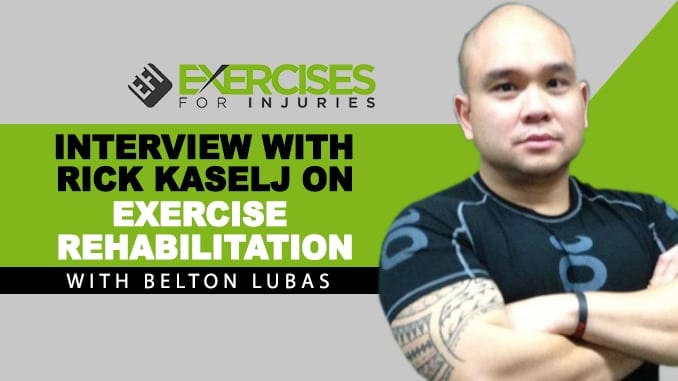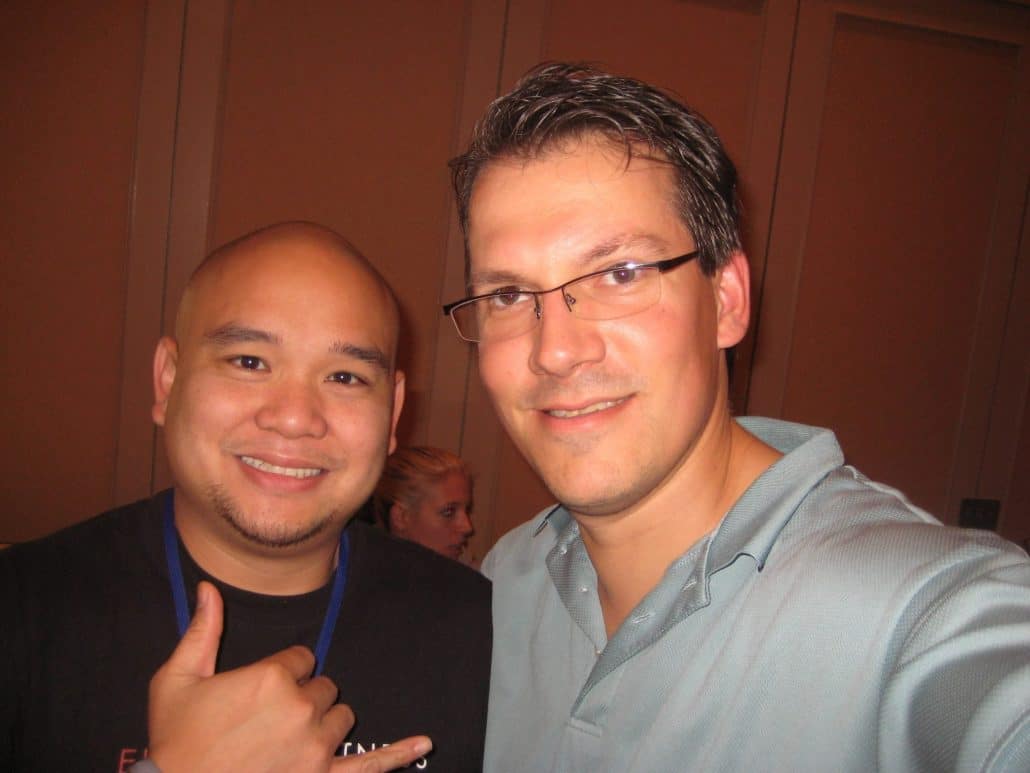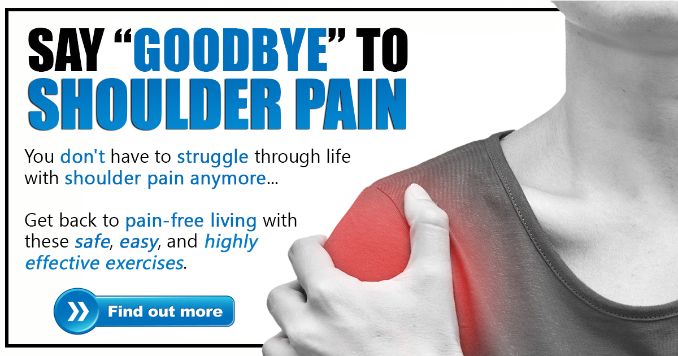
Exercise rehabilitation is the process of helping a person improve mobility, strength, and function through the use of exercise. Exercise rehabilitation can be used as part of physiotherapy treatment or with people with specific health conditions or limitations preventing them from participating in conventional exercise programs.
Today I have an interview of me to share with you!
When I was in Orlando at the Fitness Info Summit, I ran into a Fitness Professional that had taken some of my courses.
His name is Belton Lubas, and he is from Seattle. In the fall of 2008, he came up to Vancouver and attended a series of courses that I had.
Belton did a quick interview with me on exercise programs for clients recovering from injuries and what to do with a client with a shoulder injury.
Enjoy the interview. There is a mix of a transcript of the interview and video.
What is the Purpose of an Exercise Rehabilitation Program?
An exercise rehabilitation program aims to help improve or maintain your physical Fitness and joint strength after an injury. Your exercise program must customize your health history and any limitations you may have due to your injury. An exercise rehabilitation program can help you to return to normal activities and sports, prevent future injuries and manage your pain. Exercise can improve your joint range of motion, strength, and endurance and help you manage your pain. A strength- or aerobic-based program may be prescribed. You may also be given instructions for stretching. The goals of exercise programs vary depending on the type of injury and its severity.
Interview with Belton Lubas
Belton Lubas: Hey, this is Belton here of Element five Fitness. We’re here at the Fitness Info Summit. I got Rick Kaselj. What’s up, Rick?
Rick Kaselj: I’m doing great.
Where Do Fitness Professionals Fit In When Working with Clients with Injuries?
Belton: Rick and I initially met in Canada. I took a few courses Rick hosted. The cool thing is that Rick has become an authority when transitioning from rehab and working with special populations.
Many of us trainers want to jump right into performance or fat loss, which is often too much for most clients.
Many fitness professionals shy away from injuries and special populations, but that is what Rick focuses on.
So Rick, if I was a trainer, I don’t know where to start with Mrs. Jones. What are some of the things that you can help her out with?
Rick: The first step is you want to make sure that there’s nothing serious going on.
You might take on too much if you feel outside your scope. Get the person to see their doctor or physical therapist make sure there’s nothing serious going on. If they’ve been approved to begin an exercise program, you need some more tools and education regarding addressing that injury.
A lot of times, what it relates to is the knee, back, and shoulder. Those tend to be the most common injuries that I come across.
It would help if you had a little more information, education, and experience working with those injuries.
I am not talking about someone that’s completely acute. They have just ripped their ACL and broken a bone, and the next day they’re going to jump into the gym and start an exercise program. I’m talking about someone that’s had surgery. They’ve gone through physical therapy. The swelling has decreased; they have nearly got a full range of motion.
They’ve done everything they can in physical therapy; now, they must move onto the gym and continue their rehabilitation back to health.
What’s needed is trainers that can handle that transition. A trainer can help the client progress and not irritate or make that injury worse.
Rick Kaselj Interviewed about Exercise Rehabilitation & Shoulder Injuries
CLICK HERE to watch the interview with Rick Kaselj on Exercise Rehabilitation & Shoulder Injuries
What Can a Fitness Professional Do With a Client with a Shoulder Injury?
Belton: Rick, let’s talk about shoulders, for example. I’ve got a client that has some shoulder issues. I don’t want lag time and see them for four months; they may lose interest. What are ways that maybe you and I can work together?
Rick: There are several things you can do with the shoulder. If you start with the lower body, they’re apparent to do everything when it comes to the lower body. You limit the upper body movement if you get them to do squats or lunges.
Now when they get to the shoulder, you can go back to the start when comes to the shoulder. You can start working on scapular stabilizers. Which is super important, and it’s very much like the core in the low back. When you get a back injury, the body in the abdominal area stops working correctly. The same thing happens in the shoulder. When you get an injury, the scapular stabilizing muscles stop working. So it would help if you worked on those muscles.
Then the second thing is you can modify the exercise that you get them to do. And a big part of it is just limiting the range of motion. So you can get them to do movements that define abduction because that significantly puts a lot of stress on the shoulder when injured. And you can minimize flexion.
I hope you enjoyed the interview!
We will talk to you very soon.
Rick Kaselj, MS
.


